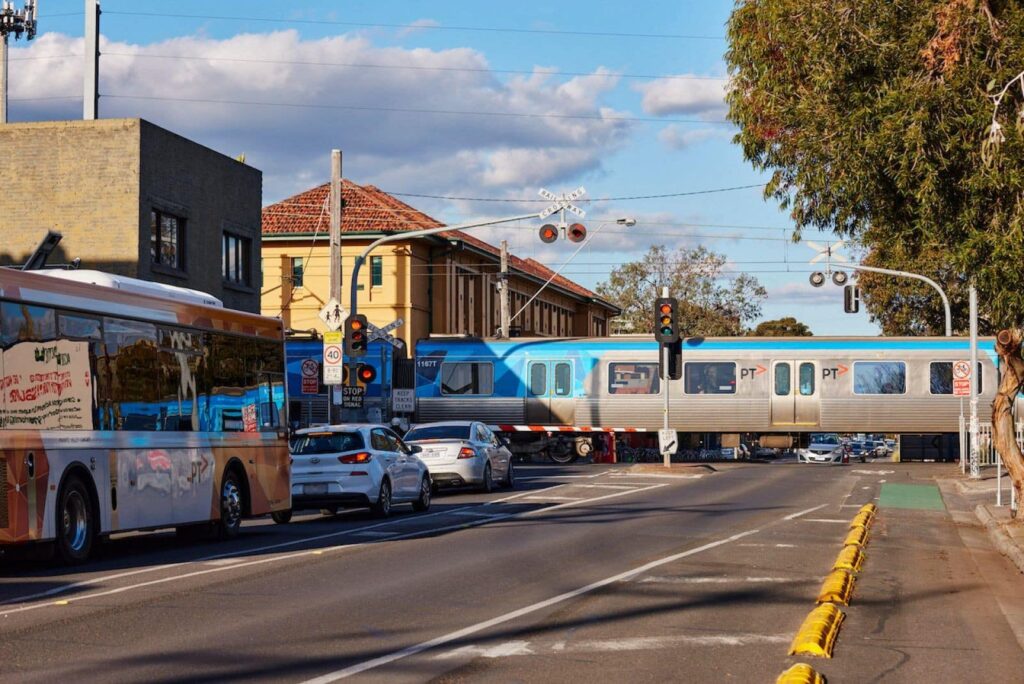Reinstatement of abandoned Portadown to Armagh railway line in Northern Ireland gets technical backing

This post was originally published on this site
Reinstatement of Northern Ireland’s abandoned railway between Portadown and Armagh is “technically deliverable” according to a study conducted by Aecom on behalf of Armagh City, Banbridge and Craigavon (ABC) Borough Council.
The technical study, part funded by Northern Ireland’s Department for Infrastructure (DfI), further determined the major infrastructure proposal is operationally feasible and would promote sustainable transport across the region. It concluded that no significant engineering or built-environment constraints to re-instating the former railway line exist.
Reinstating the rail link, which closed in 1957, was a recommendation of the All-Island Strategic Rail Review, a collaborative document between the Republic and Northern Ireland presenting €35bn (£29.2bn) of investments to revolutionise the railways on both sides of the border.
The recommendation to reinstate the Portadown to Armagh line was suggested as the first part of a cross-border connection from Portadown to Mullingar via Clones and Cavan. Proposals from the All-Island Strategic Rail Review would see 120km/h electrified double-tracked line built between Portadown and Clones via Armagh and Monaghan. Failing this, the DfI has a back-up proposal to construct a new unelectrified single-track line between Portadown and Mullingar via Armagh, Monaghan, and Cavan.
As part of the strategic review, a new conventional speed line has also been proposed for Sligo to Belfast which would incorporate a stop at Armagh, connecting the Portadown to Armagh route with Northern Ireland’s capital.
The DfI believes the railway line needs to be built due to constraints on the existing network, where its sparseness leaves many large settlements entirely unserved by rail.
It stated: “The west of Northern Ireland was one of the areas worst affected by rail closures in the mid-20th century, and large settlements such as Armagh, Cookstown, Dungannon, Enniskillen, Omagh, and Strabane have had no rail services for decades.
“Public transport and road connections within the region are often poor compared to other parts of the island which impacts on its economic competitiveness.
“Large settlements such as Armagh and Cavan are within the commuting catchment of Belfast and Dublin and restored rail links would have a beneficial impact on access to employment, third level education, healthcare, and international gateways.”
Aecom’s study into the Portadown to Armagh section examined a range of aspects including the need and demand for rail passenger services, land requirements, an economic appraisal, the technical feasibility of reinstatement and funding options.
From this, the consultancy concluded a re-established line would see many benefits in terms of shorter journey times between Armagh and Portadown, and Armagh and Belfast, as well as a 10% shift in sustainable trip-making.
The study also showed there were clear economic benefits to the reopening of the railway, which would outweigh the investment and operating costs of the project.
Wider benefits of the project include reduced car dependency and greenhouse gas emissions, a more integrated transport system, improved social inclusion, the facilitation of compact urban development and a better work/life balance for the travelling public.
The report has highlighted overwhelmingly positive support from stakeholders for the scheme. A range of transport options were considered but a direct, heavy rail passenger service between Portadown and Armagh best met the objectives set for the study.
ABC Borough Council mayor Alderman Margaret Tinsley said: “Thanks to the extensive research undertaken as part of this study, the council has renewed its commitment to work in partnership with the Department for Infrastructure and Translink to take this project forward.
“Armagh is the only city on the island of Ireland without a rail connection. The lack of investment in its infrastructure is hindering the historic city from reaching its full potential.
“Restoring the Portadown to Armagh line will provide a higher quality, sustainable, low carbon and climate resilient public transport network that connects the city to Belfast and beyond. It will cater for an increase in demand from the borough’s rapidly growing population, help connect communities and improve accessibility to jobs, homes, education, and social and economic opportunities.
“Furthermore, it will boost the city’s attractiveness as a major tourism hub in NI and support economic growth along the Craigavon corridor. The council is keen to work with the DfI and Translink to further develop the proposals.”
DfI director of public transport policy & climate change response Jackie Robinson said: “We appreciate the work that has gone into this technical study by the Council and their consultants Aecom.
“This provides further evidence and information that will assist in the prioritisation of recommendations outlined in the All-Island Strategic Rail Review once the responses to the consultation on it have been considered and the Report finalised and agreed.
“In addition, the department is currently drafting a Transport Strategy for Northern Ireland which is a high-level strategic document to look at the overall policy context and identify transport priorities across the region; whilst also considering how we make our contribution to net zero. This is expected to be published for public consultation in the coming months.
“The transport strategy will guide the future Transport Plans within which this rail extension can be considered.”

A potential future all-island railway network as put forward in the All-Island Strategic Rail Review
Like what you’ve read? To receive New Civil Engineer’s daily and weekly newsletters click here.





Responses